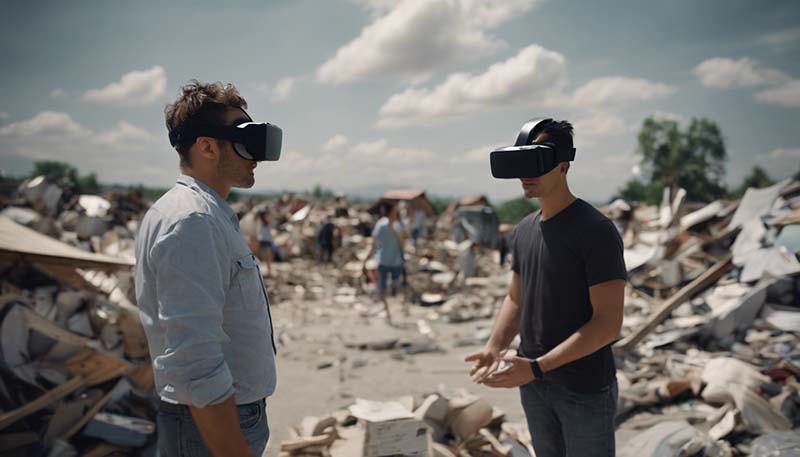The Role of Virtual Reality in Disaster Relief
Introduction
Virtual Reality (VR) has been a subject of fascination for decades, but it's only in recent years that the technology has become advanced and cost-effective enough to be used in practical applications beyond gaming and entertainmentOne of the most promising areas for VR is in disaster relief, where it can play a significant role in training, planning, and executing operations to save lives and mitigate damage.
The Importance of Disaster Relief
Disasters, whether natural or man-made, can have devastating effects on communitiesThey not only result in loss of life but also in significant economic and social impactEffective disaster relief is crucial for the rapid response and recovery process, which is where VR can be of great assistance.
Training and Simulation
VR offers a safe and controlled environment for responders to train for various disaster scenarios without the risk associated with real-world exercises
This allows them to gain valuable experience in handling different types of disasters, from earthquakes to chemical spills.
Risk Assessment and Planning
Using VR, experts can simulate different disaster scenarios to assess the potential risks and impactsThis can help in planning and designing more effective disaster relief strategies, evacuation routes, and resource allocation.
Real-Time Operations
In the midst of a disaster, VR can be used to create a real-time 3D model of the affected areaThis can help responders navigate through debris, locate survivors, and determine the best course of action for rescue operations.
Psychological Support
VR can also be used to provide psychological support to survivors, helping them to cope with the traumatic experiencesIt can be used as a tool for exposure therapy, allowing survivors to confront and process their experiences in a controlled environment.
Challenges and Limitations
While VR has the potential to revolutionize disaster relief, there are several challenges and limitations to consider:
Technical Limitations
The technology required for VR is still relatively expensive and can be complex to set up and maintain
This can be a barrier for smaller organizations or those in developing countries.
User Adaptability
Not everyone is comfortable with VR technology, and some may experience motion sickness or disorientationIt's important to ensure that all responders are adequately trained and comfortable with the technology.
Data Privacy and Security
VR applications often require the collection and processing of large amounts of data, which raises concerns about privacy and securityIt's crucial to have robust data protection measures in place.
Future Prospects
As technology continues to advance, the role of VR in disaster relief is likely to expandHere are some potential future developments:
Integration with Other Technologies
VR can be combined with other technologies, such as drones, augmented reality (AR), and artificial intelligence (AI), to create even more powerful tools for disaster relief.
Personalized Training
With advancements in AI, VR training programs can become more personalized, adapting to the individual needs and learning styles of each responder.
Global Collaboration
The use of VR can facilitate global collaboration among disaster relief organizations, allowing them to share knowledge, resources, and strategies more effectively.
Closing Remarks
Virtual reality is a powerful tool with the potential to transform the way we approach disaster relief
 By providing immersive training, aiding in risk assessment, enhancing real-time operations, and offering psychological support, VR can help save lives and reduce the impact of disastersAs the technology continues to evolve, it's important for disaster relief organizations to embrace these advancements and integrate them into their strategies for better preparedness and response.
By providing immersive training, aiding in risk assessment, enhancing real-time operations, and offering psychological support, VR can help save lives and reduce the impact of disastersAs the technology continues to evolve, it's important for disaster relief organizations to embrace these advancements and integrate them into their strategies for better preparedness and response.
Comment